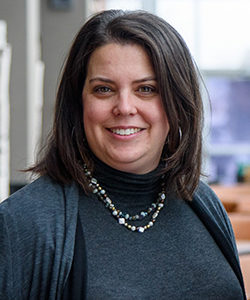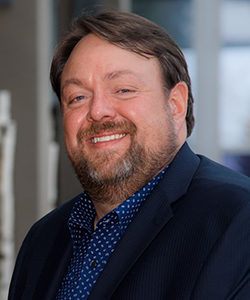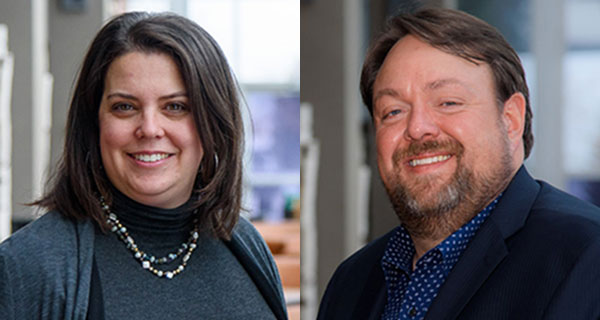Gena Rotstein and Richard Ouellette are founders of Karma & Cents.

Gena Rotstein
What is Karma & Cents? When did you start it? Why? And what does it do?
Answer: The idea of Karma & Cents was started, as many other great ideas do, over a meal, a bottle of wine and great conversation.
We (Gena Rotstein and Richard Ouellette) were passionately discussing all the good, bad and ugly aspects of the philanthropy and charity worlds. The one item that rose to the top of our list of frustrations, that’s also reflected in our age and mindsets, was that neither one of us cares to do chequebook philanthropy. Most importantly, we could not see how simply funding an organization that asks “Please sir, can I have some more?” without putting direct connections between our philanthropic investment and the solution they were seeking funding for makes sense.
Both of us have been involved with multiple charities and non-profits over the years and we have always tried to maximize our contributions by leveraging our ties, talents, treasures and time. What we affectionately call the Four Ts.
With that as our starting point, we started to extrapolate how we could best use our individual skill sets to help reshape the conversation. Using Gena’s nearly 20 years of experience in this sector and Richard’s background in science and technology, we developed a Social Impact Lab (SIL) for families and individuals who want to finance solutions instead of simply fund problems.
This lab walks participants through a five-step operation to address complex social problems using science and process control. We facilitate conversations with more than just front-line charities in order to have a deeper and wider perspective on the problem. By creating a space that allows for meaningful conversation to occur with funders, charities, vendors/suppliers, clients and others impacted by the issue, we can design solutions that are measurable and can be deployed and tested in short order, so as to see the results and pivot the solution if necessary.
We are a cog in an individual’s or family’s wealth strategy. We are product agnostic and don’t provide legal or financial advice. As such, we work with different advisers at different stages in a person’s financial and business lifecycle being a ‘quarterback’ or a ‘receiver’ as needed. We work with individuals, families and family business owners, predominantly in Western Canada, transition their wealth from one generation to the next and achieve measurable social impact with their charitable buck.

Richard Ouellette
You have a philosophy that you can make money and do good at the same time. Where did that come from?
A: Our view of how to build a successful business was in part born from our personal grounding from our families and what we learned in building other companies. We take the adage from Peter Drucker in his thinking that the most successful companies are those that are built like communities, on trust with people at the centre.
Our company mandate is that we explore all aspects of our clients’ philanthropic needs. One of our first steps to our Social Impact Lab is to conduct a shallow and then deep dive on what our client wants to achieve in his or her community and how she or he wants to engage their network in the process. We call this Philanthropy 3.0 because we look beyond the traditional role of giving as the only solution to social change.
By working on a multi-disciplinary team of advisers, we explore things like: doing good with your investments while ensuring that they meet your risk tolerance, highlighting how consumer behaviour and procurement policies can have a positive impact.
We work hand-in-glove with financial advisers, accountants and lawyers to ensure that our clients’ philanthropic vision is aligned with all other aspects of their portfolio.
Why is philanthropy important in our society?
A: If money was the solution, we would have solved these problems a long time ago.
In Canada we have an expectation that our governments would take care of most of our social needs through taxes. Unfortunately the cost of providing these services cannot be fully borne by our taxation system; as a result, we rely on private and corporate funding to meet these demands. These two sectors receive incentives to help through tax credits via charitable contributions. But philanthropy alone can’t solve or support 100 per cent of the demands.
Philanthropy 3.0 is an amalgamation of traditional philanthropy, conscious consumerism, retail philanthropy, impact investing and leveraging intangible assets like time and talent. This is where our work comes in. We help design giving portfolios that are layered, measurable and nimble so that as needs in the community change or as needs within the funders’ lives change, the plan can adapt.
What has been the impact of the most recent recession on philanthropy in the city?
A: The want and need to do good in our society is a basic human function. As the pocketbooks of some people in Alberta started to tighten, there is a notable shift to realizing that there are many other ways to leverage your time/talents/ties and be able to have a greater impact than just writing a cheque. It’s these people who we’re interested in helping in their philanthropic journey.
Compounding the recession is the intergenerational wealth transfer and the spousal wealth transfer. This started about five years ago and it’s estimated that by 2030, women will be influencing almost 70 per cent of Canada’s gross domestic product (according to a study from TD Bank). We know that women can take up to 36 months to make a major contribution whereas their male counterparts only take up to eight months for the same sized gift. The charitable sector needs to be prepared for these longer, more relationship-focused cycles.
We’re seeing that those organizations that are clear in their mandate, have a proven track-record for designing solutions that work, have strong leadership and work in a collaborative manner in the sector are the ones that are weathering the financial challenges the best.
What are the most common trends you’re seeing today in the area of philanthropy?
A: There are three distinct types of ‘new’ philanthropists today: young donors who aren’t into chequebook philanthropy; young professionals who are tech-savvy and understand how to leverage the intangible assets they bring to the table; and inheritors of family/spousal wealth. The one thing that these three demographics have in common is that they want to leverage their dollars and that relationships are at the core of their giving.
- There’s a younger demographic (30 to 50 year olds) who are tired of being seen only as a pledge amount., how their parents and grandparents are contributing to the community. These are the people who want to amplify their social return on investment by leveraging their networks and they want to see, feel, touch and experience the results of their giving.
- This is the first time we have a generation that has been taught that ideas are a commodity and as such something that has value. The generation Yers/Zers and iGen ‘kids’ are able to leverage their ideas through all the technological platforms available to them to gain momentum around an issue and raise corporate and private funds.
- As families go through this multitrillion-dollar wealth transfer over the next three decades, these younger philanthropists, whose philanthropic identity is being shaped today, will be fully financed tomorrow. As such, financial advisers, tax lawyers, family business coaches, etc., need to really consider how philanthropy and social purpose will play into the wealth strategies and business strategies of the families and individuals that they’re working with.
– Mario Toneguzzi
The views, opinions and positions expressed by columnists and contributors are the author’s alone. They do not inherently or expressly reflect the views, opinions and/or positions of our publication.


